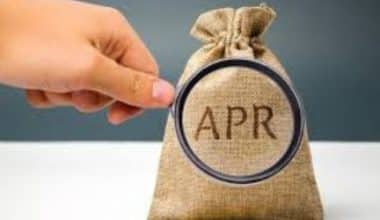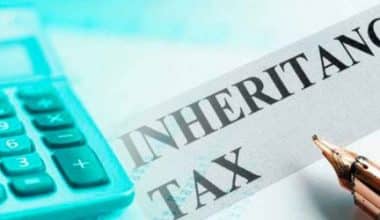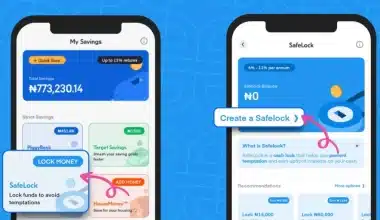There is a maximum balance on any credit card. Your issuer assigns you a credit limit, which is the maximum amount you will owe on your card at any given time. You will continue to make transactions up to this maximum amount. This is for as long as you maintain good terms and stay within your limits. This is your card’s available credit.
Understanding Available Credit
The available credit is the difference between the total credit cap and the amount accumulated by the borrower through transactions (in addition to the interest on the number of their purchases).
Available credit for credit card holders is the remaining balance after subtracting all transactions (and interest on such charges) from the overall credit limit on your credit card. Available credit for credit cardholders can fluctuate. This implies that it can increase or decrease depending on the borrower’s purchase and payment history. A borrower can check their available credit at any time.
The creditor must make annual payments of both the principal and the interest on credit cards and most other forms of debt. Payments on credit cards go toward increasing the borrower’s available credit. The borrower can then use it for additional purchases. When a borrower makes payments on any revolving credit account, including credit cards, their available credit decreases. Payments, on the other hand, increase their available credit.
When interest is applied to a borrower’s account each month, his or her available credit decreases. Borrowers receive a monthly statement that lists all of their transactions, any interest accumulated over the previous 30 days, and the amount of their required payment. A borrower’s payment rate includes both their principal and interest. A borrower’s principal is the amount of debt they incur from transactions. The amount of interest due varies depending on the cardholder’s interest terms.
What does available credit on a credit card mean?
The unused balance of your credit card’s credit line that you haven’t spent is referred to as available credit. Your available credit is on your monthly account statement or by logging into your online card account. It is important to be aware of how much available credit you have. So, attempting to spend more than that amount can result in your card being declined.
The card issuer begins with your full limit to determine your available credit. Then, the current balance is subtracted from your credit cap. This includes any sales, taxes, and interest you already owe, as well as any contributions you’ve made against your balance. This leaves you with a balance of available credit.
Here’s a simpler way to see available credit:
Credit limit minus current balance equals available credit.
Of course, you don’t determine available credit once a month. One can calculate it if the current balance shifts. When you make a credit card purchase, for example, the usable credit increases. When you use it to make a purchase, your available credit decreases.
It’s worth remembering that the less credit you have available, the higher your utilization on that credit card. And if your credit utilization remains high, it can be detrimental to your credit score. To retain your credit standing, keep your average credit utilization below 30%.
What is Current Balance?
A credit card’s current balance is the amount you owe on your record, less any outstanding transactions or payments. The current balance includes all of the transactions you’ve made that have been processed by your card company since you last paid your bill.
You’ll probably see “Current Balance,” “Pending Balance,” and “Available Credit” on a card account summary. Pending balance applies to transactions that are being processed but haven’t yet been reflected in your current balance. Your total credit cap less your existing and pending balances equals your available credit. Essentially, available credit is the amount of credit you have remaining before making a payment.
To make it easier to understand, consider the following:
Available Credit = Credit Limit – Current Balance – Pending Transactions
For example, suppose you have a $5,000 limit, a $1,500 current balance, and a $500 pending balance. Your existing and pending balances total $2,000.00. Subtract the amount from $5,000 to get your usable credit: $3,000.
When you make a payment, the balance is deducted from your available credit. When you make a payment, the available credit will increase by the amount of the payment until it has been processed.
Read also: BAD CREDIT: Definitions, Examples & amp; Penalties
Current balance Vs Available credit
The number of all posted transactions as of the previous business day is your current balance. Your available credit calculation is by subtracting your existing balance from your limit and adding any unpaid charges. Please keep in mind that this sum will change during the day as it receives charges. For example, hotel merchants may use your card to make a reservation. But you may pay them with a check once you arrive. As a result, the hotel will withhold $200 of your available credit before you complete payment.
Importance of having Available Credit
The more credit you have available, the better. Having a lot of credit available is beneficial to your credit score. It makes you seem less risky to lenders. A lower balance means a lower credit utilization ratio, which accounts for 30% of your score. In general, you can keep your credit card balance under 30% of your limit. On a card with a $1,000 cap, you’d want to keep your balance under $300. This leaves you with $700 in available credit.
The less credit you have available, the less valuable your credit card is to you. You won’t be able to use your card to rent a car or book a hotel room, for example. Your only other choice is to use your debit card. However, certain transactions require a security deposit or additional authentication while using a debit card.
What happens if you use more than your Available Credit?
Transactions that exceed your available credit are normally rejected unless you have given permission for over-the-limit transactions to be processed. By opting in, you authorize the credit card company to process purchases that will exceed your credit limit. However, if your card issuer has these features, you risk incurring an over-limit charge or a penalty rate.
If you have met your limit, your available credit will be negative.
Increasing your Available Credit
Your available credit does not reset, but it does change when your payments reflect on your account. When you make card payments, you free up more available credit. It is important to note that depending on your issuer’s payment posting policy, it will take a few business days for the payment to be reflected in your available credit. If you’re trying to free up credit for big order, you may make a deposit several days ahead of time.
Requesting a limit increase is another way to increase your usable credit. When you make the request, the card company will look at your account and history to see if you qualify. You’ll still have the same amount of debt, but the limit increase, if accepted, will increase your usable credit. The age of your account, your payment history, and changes in your income are all factors that will affect your eligibility for a credit line increase.
Charges and Fees
The Consumer Financial Protection Bureau regulates the fees that card companies can charge for card accounts that exceed their limit. A fee of up to $25 may be levied the first time a balance reaches a specified limit. A fee of up to $35 may be levied the second time a balance reaches the limit in a six-month span. However, the fines or fees imposed do not exceed the amount by which the account has exceeded its cap.
For breaching the terms of the agreement, certain card companies will impose a high penalty annual percentage rate (APR). It can be possibly canceling a previously offered low-introductory APR.
Individuals who have decided to accept over-limit fees can change their minds at any time by notifying the lender in writing. However, this does not extend to transactions made before opting out of over-limit fees. Furthermore, once a borrower has opted out, the lender is more likely to reject transactions that carry an account beyond the cap.
Can I see my available credit online or do I need to call my credit card company?
Many credit card companies provide online access to account information, including available credit. You can usually log in to your account online or through a mobile app to view your available credit. If you’re not able to see your available credit online, you can contact your credit card company by phone or through customer service to inquire about your balance.
How can I improve my available credit utilization rate?
Your available credit utilization rate is the amount of credit you use compared to the amount available. A high utilization rate can negatively impact your credit score, so it’s important to keep it low. You can improve your utilization rate by paying down your balances, asking for a credit limit increase, and making payments on time. Additionally, spreading your credit usage across multiple cards rather than relying on just one can also lower your utilization rate.
What happens to my available credit during a fraud investigation?
During a fraud investigation, your available credit may be frozen to prevent any further unauthorized purchases. This means that you won’t be able to make new purchases until the investigation is completed. The credit card company will review the activity on your account and determine if any fraudulent purchases have been made. If so, they will take the necessary steps to remove the charges and restore your available credit.
Can I get cash using my available credit?
Yes, you can use your available credit to get cash, but this is typically referred to as a cash advance. Cash advances usually come with high fees and interest rates, so it’s usually better to avoid them if possible. You can withdraw cash using your credit card at an ATM, but be aware that this will result in a cash advance.
How does available credit impact loan approval?
Your available credit, also known as credit utilization, is one of the factors that lenders consider when evaluating your loan application. High utilization rates can indicate that you’re relying too heavily on credit and may be a higher risk for the lender. To increase your chances of loan approval, it’s a good idea to pay down your balances and keep your utilization rate as low as possible.
Is available credit the same as cash advance credit?
No, available credit and cash advance credit are not the same. Available credit refers to the amount of credit that you have available to use, while cash advance credit refers to the amount of credit that you can use to get cash. Cash advances usually come with high fees and interest rates, so it’s generally best to avoid them if possible.
Conclusion
The difference between your card limit and your card balance reflects in your available credit. Your transactions may be rejected if you do not have enough available credit. So, you may be charged a fee and obtain a penalty rate if you allow your card issuer to authorize charges that exceed your credit limit.
Your utilization ratio, which is one of the most significant variables on your report, is a result of your available credit and your card balance. You can also expand your available credit by paying down your balance. Also, you can request an increase in your limit from your card issuer to expand your available credit.
Available Credit FAQs
Is it good to have a lot of available credit?
If you’re using more than 30% of your available credit on any card or across all cards, you could be headed for a lower score. Opening too many accounts at once. Adding a bunch of credit accounts over a long stretch of time is fine
What happens if I go over my credit limit but pay it off?
Using credit cards and paying off your balances every month or keeping balances very low shows financial responsibility. … More, exceeding your credit card’s limit can put your account into default. If that happens, it will be noted on your credit report and be negatively factored into your credit score
Do you pay back available credit?
Available credit and installment loans
There’s no option to pay some back and re-borrow that amount later. If, however, you have a home equity or personal line of credit, that’s considered revolving credit, where you can use your available credit, pay it off to your lender, and repeat.






